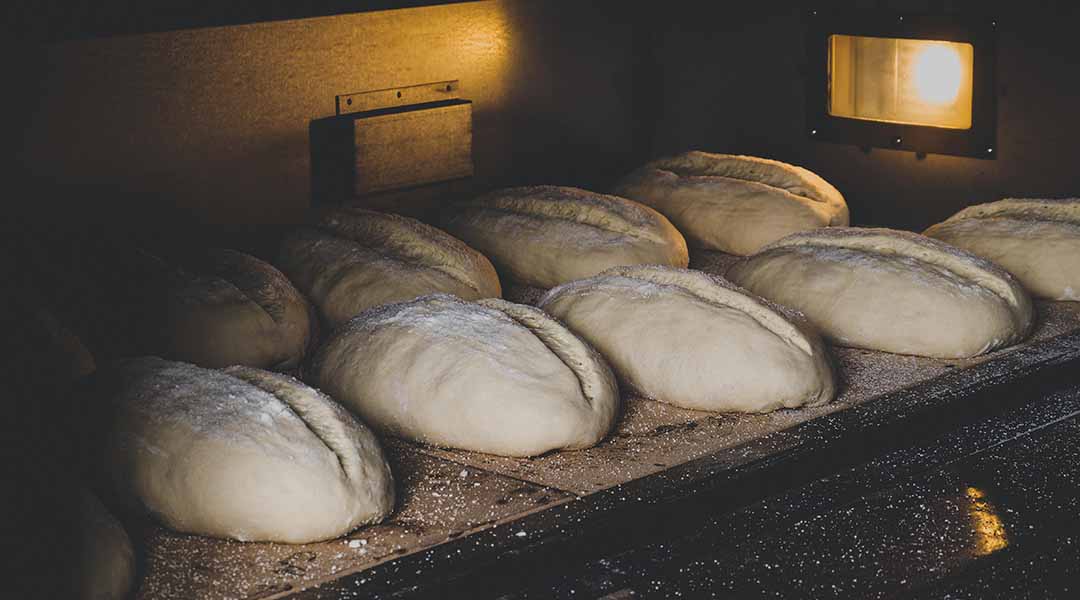Panaderya Toyo brings back the tradition of good bread-making, thanks to the efforts of Richie Manapat and Jordy Navarra. Using only flour, water, salt and sourdough, they create bread that is as naturally nutritious as it is delicious.
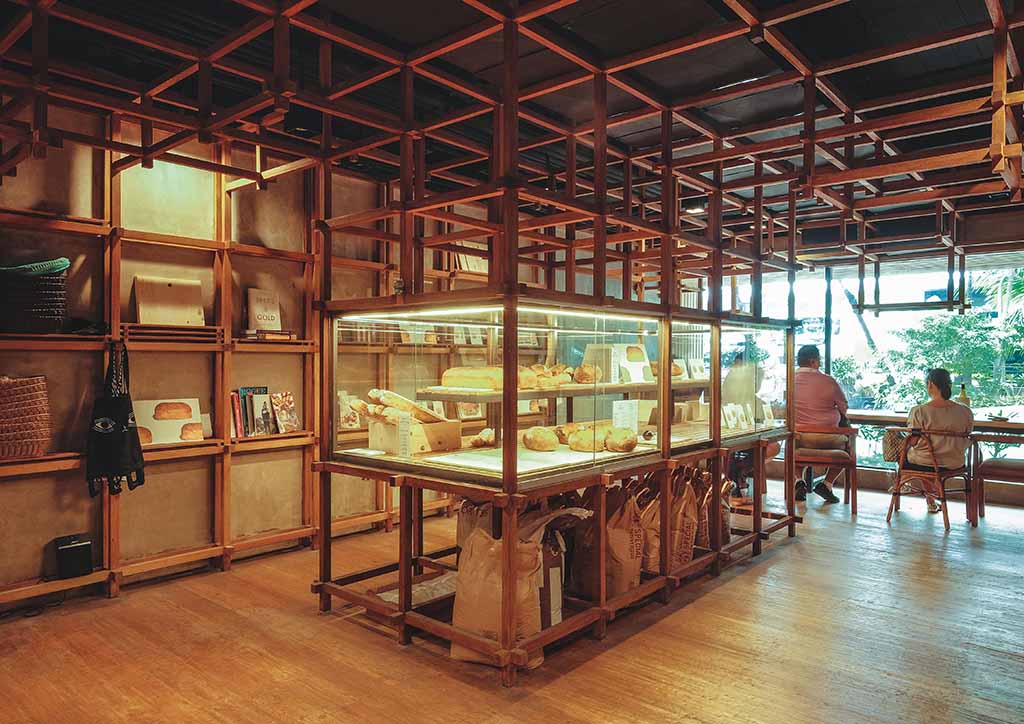
HAND MADE
The panaderya’s sleek interiors was courtesy of Architect Arts Serrano
[br]
At the conception of Toyo Eatery, Chef Jordy Navarra, being the holistic and meticulous culinary man that he is, knew that he wanted to make the best bread that he could to offer his diners. He realized that he didn’t have the proper skill-set to produce bread that can stand alone as a main, and one that could pair well with his uniquely charred dishes prepared in native and traditional techniques. This is where Chef Richie Manapat comes in. “I happen to drop by and then saw that they were trying, and it didn’t work out. I said, ‘Maybe I can help you guys.’ Since Jordy looks at every single part of the whole restaurant, that’s how we ended up with working with sourdough for Toyo Eatery.”
Their partnership of two years have been testament what each chef brings to the table. Toyo Eatery has become one of the busiest restaurant concepts serving reinvented and reinterpreted Pinoy comfort food, with Navarra at the helm, and Manapat second in command. The bread that they serve in Toyo Eatery was requested so frequently that it even came to a point where some diners dropped in to buy bread, and just that.
A space opened up in Karrivin along Pasong Tamo, conveniently right beside the restaurant, and the duo seized the opportunity to open a place that made, baked, and served bread—a panaderya. They quickly began offering the favorites, as well as new additions to the menu at Toyo. This included Pan de Sal, Pan Casero, Barra, Buttermilk, Pan Mayaman and Pan de Lata. “Everything that doesn’t get consumed in Panaderya is used for the restaurant for dinner service,” adds Manapat. “What doesn’t get consumed at the end of the day is taken back to Panaderya to dry and process into bread crumbs for the Pan de Sal.
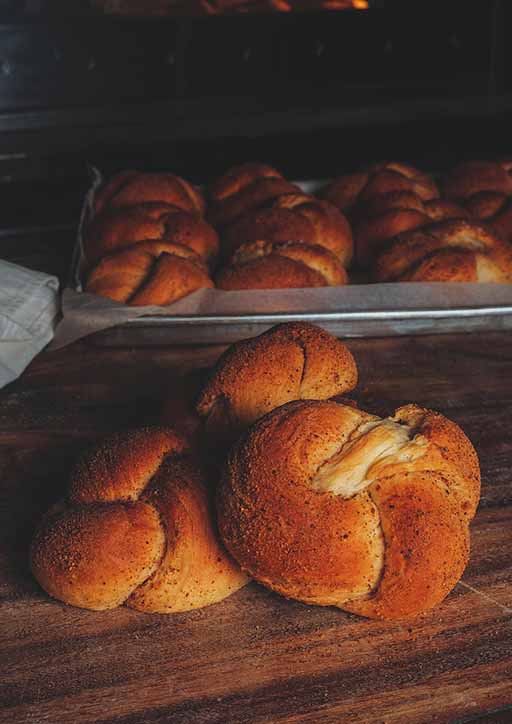
OVEN FRESH
Panaderya Toyo’s popular pan de sal hot off the oven
[br]
The Big Idea
Navarra opens up about the vision of the bakery. “The idea of Panaderya is come up with the most natural way of making bread even if we’re making Filipino style breads. How would we make it?”
The underpinning answer is to favor sourdough. It is bread that’s made with as natural ingredients as possible, mainly flour, water, and salt. The sourdough leavens the bread naturally, with multiply types of cultured bacteria and yeast contributing to the flavor, releasing carbon dioxide, making bread more nutritious, and breaking down sugar. If you wanted to make bread as naturally as they did in the past, this is it. Real bread also has a “longer fermentation, [it’s] properly fermented. Everything else is bad.” According to Manapat, good quality breads made and processed in the most natural way is a pretty long process. Panaderya’s Pan de Sal takes three days from start to finish, while the Pan Casero takes two days. All their breads are made between two to 3 days, their longest one being 48 hours to make the 48-loaf.
[br]
A Crumby Affair
Bread, like grains, was the first agriculturally cultivated food of the modern human, so it’s no surprise that it still holds a special place in our modern diet. The Filipino love affair with bread is not coincidental.“All cultures of humans have had some sort of bread,” explained Manapat. “The Mayans would have tortillas. In the native Africas they have sourdough crepes called injeras. We [also] had sourdough puto before.”
The Spanish colonizers always brought grapes and wheat with them because they couldn’t do mass without the bread and wine for the Holy Sacrament of Communion. In a way, that tradition that has been handed-down to the Filipinos became an integral part of our culture. Who wouldn’t go for a cup of coffee and a piece of pan de sal in the early morning? Globally, “and as a species, there are things that the homosapiens just naturally figure out what to do. Multiple cultures growing independently have different forms of bread.”
[br]
Bakery First, Cafe Second
All breads available in-house can be bought and enjoyed on their own, but for those who would like to dine in and get a more filling bite to eat, Panaderya offers sweet and savory palamans on the side, in a strengthened partnership with Toyo Eatery.
When you order a dish off their menu, you will notice how the bread is on the side, and the palaman is served in a bowl. Navarra says “it’s nice to have the bread on the side so people can see the bread, the crumbs, to see the irregular holes. We wanted people to really focus on the specific bread that they make.”
It also gives the diner the freedom to choose how they will eat it. They can either spread the palaman on the bread, make a sandwich out of it, or, as Manapat likes to call it, “Scoop, chew and bite. I eat it like rice. It’s not messy that way. Just spread it on and eat it, it falls out the sides. It’s an easier way of eating.”
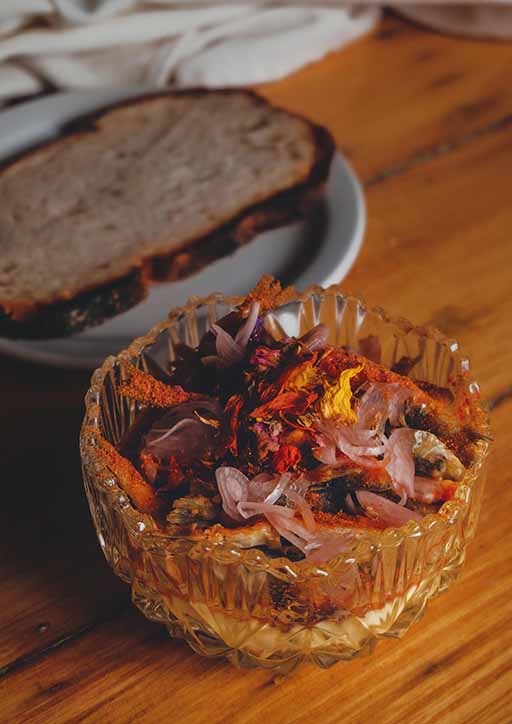
MUST TRY
The best-selling Scrambled Free-Range Eggs and Crispy Fish, Tomatoes and Tortang Talong inspires day dreams
[br]
Roll Call
You can pick your favorites from their Drink, Bread, and Spread Basic Menu (P200). Choose from Americano or Espress, Tsokolate, Coffee with Milk (add P40), or Coffee with Tsokolate (add P60) for your beverage, and bread choice with either a sweet spread of Auro white chocolate and cashew, or a savory spread, a slightly salty and creamy spread of smoked fish mousse and flying fish roe. Navarra recommends to get it with Pan Mayaman.
Their Tinapay and Palaman Menu explores a more adventurous side servings including a bowl of Caramelized Onions, Garlic and Tomato Mayo, Smoked Paprika and Octopus (P320), and Torched Saikoro Steak, Crispy Onions with Soy and Mustard Paste (P750). Their best-selling Scrambled Free-Range Eggs and Crispy Fish, Tomatoes and Tortang Talong (P310) is a hearty and filling serving of torta bits, spicy crispy fish, and succulent tomatoes sitting on soft and creamy scrambled eggs. It’s a burst of flavors and textures joining together playfully in your palate. Their Cured Pork, Chili Oil, Pickled Cucumbers and Lime, Soy Butter (P350) is a semi-sweet serving of tocino with a creamy-tangy kick. The soy butter lends body and savor to the overall palaman. “Things like pork and beef, I find it goes well with the Barra Portion. You get a nice crispy crust on the outside and when you slice it in the middle, you have the moist crumb. It’s a nice contrast especially when you’re eating it with meat,” says Navarra.
Panaderya wants to stick with a Filipino menu and asks themselves, “what would I want to eat, especially for merienda? We’ll be seeing more varieties of bread and meat such as Bicho-Bicho, Barbeque, Puto and Dinuguan, and their own take on the Ensaymada, Kalihim, and Pan de Regla. Manapat wants to emphasize that they will create these Filipino breads “with no food coloring. A lot of those breads have food coloring. Yellow food coloring, artificial egg color, red dye color.”
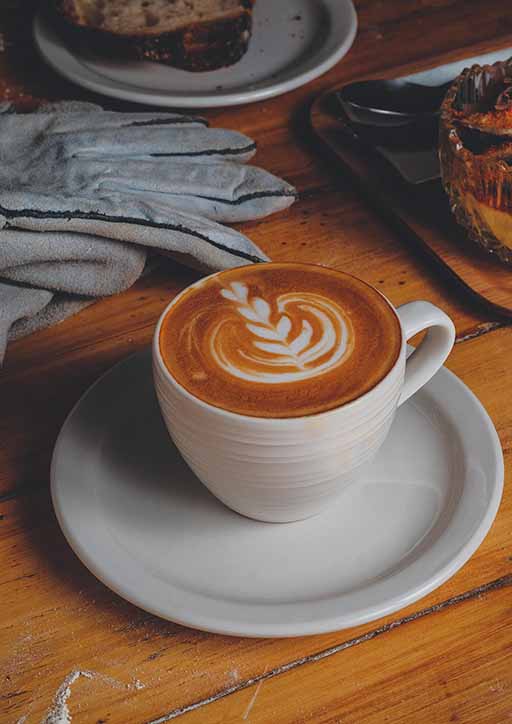
SOMETHING’S BREWING
The coffee and tsokolate make each bread a perfect breakfast or merienda
[br]
As light as your bread, as dark as your coffee
Panaderya is partners with EDSA Beverage Design Group, offering their Dark Matter Theory coffee for guests. They are one of the top breweries for coffee and other drinks who work with different third wave coffee shops and concepts.
It just must be—pairing bread and coffee. For Manapat, “When you smell bread, you automatically want to drink coffee with bread. Or chocolate with bread. For us, I think with all types of coffee, generally, bread is a nice pairing.” When asked what their caffeine of choice is, Manapat says he likes a piccolo, while Jordy favors a shot of espresso with their bread.
[br]
Baker’s Truth
Panaderya is here to #stopbadbread once and for all. To serve and to educate people of the naturally healthy and tasty sourdough. For Manapat, however, it doesn’t end there. His ultimate goal as a breadmaker is “to make truly local bread—using local wheat.” This is because wheat doesn’t grow in Philippine soil anymore. There have been historic records of wheat locally farmed and processed, but the advent of cheaper alternatives such as importing, has driven the practice to extinction. “It’s a very long-term project. It’s very plausible—you just have to decide to do it.” For Manapat, that mindset is what’s deterring us. The consumer behavior should change and more businesses like Panaderya should pop up. Navarra emphasizes that we have to continue the culture of consuming good bread, and altering the methods of commercial breads, and adds that “if you want the ultimate dream—truly have truly local bread—[it has to be made with] local wheat, made by local farmers, grown here, touched by the people from here. That’s something that you wanna see happen over time. I guess you push it to pursue. Bit by bit you get there.”
[br]
